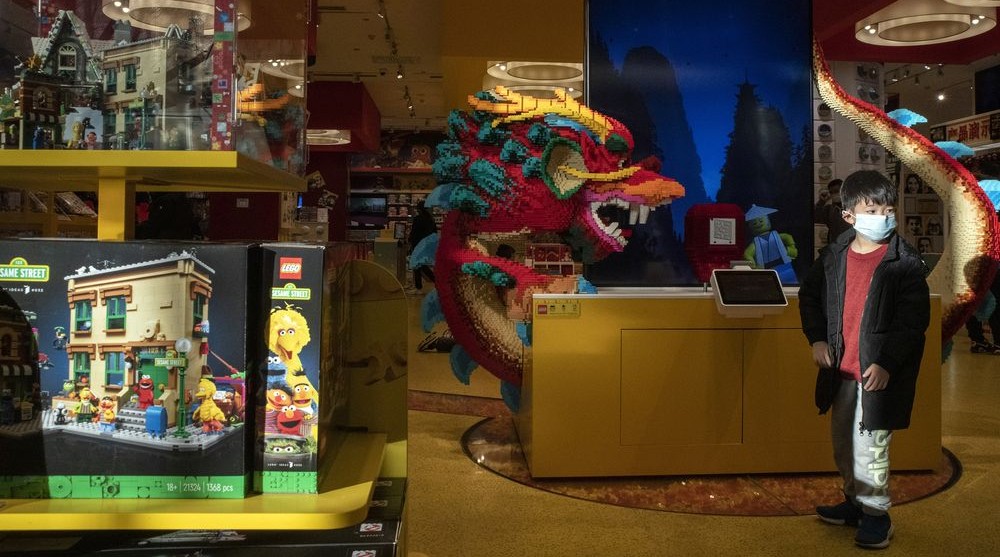4 opportunities in the China retail market
The China retail market is the world’s second-largest, and it’s expected to overtake the U.S for the top spot within the next few years. While COVID-19 did cause a dip at the beginning of 2020, the China retail market finished the second half of the year strongly — and that will continue throughout 2021 and beyond.
As retail markets across the globe continue to falter under the economic stresses brought on by the pandemic, brands are increasingly looking to alternative markets to combat the slowdown in local business. So, if the China retail market is part of your 2021 growth plans, here are four opportunities to capitalize on.

1. High growth industries
Here are some of the top-performing industries that are driving the China retail market:
Luxury
As global sales on luxury products diminished under COVID-19, the luxury market in China actually grew by a whopping 48% last year! And by 2025, it’s expected to be the world’s largest.
The boom in luxury sales has been part-fuelled by Chinese consumers who would usually have spent big on luxury products while vacationing abroad. However, even as international borders begin to reopen this year, China’s luxury market is still expected to grow by more than 30%, thanks to Chinese citizens’ increasing economic clout and expanding middle-class.
Toys
17% of China’s nearly 1.4 billion people are 15 years of age or younger. That means there are upwards of 238 million Chinese youngsters eager to get their hands on what children around the world clamour for — toys.
The Chinese toy industry has produced annual growth of around 9% since 2016. It was valued at 153.9 billion RMB in 2019 and is projected to reach 186.2 billion RMB by 2022. The most popular platforms for selling toys are Tmall (60% market share) and JD (>35% market share).
Read our blog for more on China’s toy industry.
Health/wellness/fitness
The 2008 Olympics had a huge impact on health, wellness, and sports across China. Consumers today are taking care of themselves and their families, purchasing products that allow them to live healthier lifestyles.
Categories like sportswear and fitness apparel, nutraceuticals, and fresh food and beverages have all seen YoY growth for the past few years. That will accelerate further as we approach the 2022 Winter Olympics in Beijing.
Alpine sports have been growing in popularity for a number of years in China, and ice hockey has exploded — minor hockey is at 100% capacity across the country. Expect the Winter Games to drive sales of equipment and apparel in these categories through the roof.

2. Rising demand for Western brands
Shoppers in China are flocking to Western brands, and they’re not just searching for aspirational names in fashion or technology. Millions of Chinese consumers are also looking to buy everyday products, like consumer packaged goods or housewares and appliances.
The demand for imported international brands in China has created a fast-growing market for cross-border e-commerce. In 2017, China’s cross-border retail e-commerce sales amounted to approximately $100.2 billion U.S. dollars and are expected to exceed $199 billion U.S. dollars by 2022.
Alibaba’s Tmall Global is one of the leading cross-border e-commerce platforms. Between April and the end of August last year, the number of new brands that launched on the platform increased by 125%.
Tmall’s president of import and export Alvin Liu, said that the coronavirus pandemic was driving up demand for international brands due to the ongoing travel restrictions. So if you have the China retail market in your sights, get in quick.

3. Physical stores
With the extended lockdowns brought on by COVID-19 last year, brick-and-mortar stores are naturally seeing a resurgence in China as people look to return to normality — particularly as travel restrictions remain in place.
One company betting big on brick-and-mortar retailing is LEGO. China is already one of its biggest markets, but it says that stores are needed to grow market share even further. LEGO is relatively new to the country, so few Chinese parents played with the bricks as children. Stores provide families a chance to experience the LEGO brand directly, building a connection with the product.
LEGO plans to more than double the number of stores it has in China, to 300 in 85 cities. This, however, is part of a two-pronged approach to growth. The company is also aggressively expanding online to make it easier for parents to buy the products they see in stores. Last year, the company introduced a wide range of web initiatives – and a livestream session they launched in May brought in over 10 million viewers.
“People with the most retail stores do better online,” Jacob Cooke, WPIC’s chief executive officer, told Bloomberg Businessweek. “I don’t think anybody has the reach offline that LEGO has.”
Whilst stores resurge as people welcome some return to their normal social lives, e-commerce is unlikely to slow down. The brands that exceed competitors in bringing the shopping experience to the consumer are the brands that will dominate the China retail market.
4. Rural areas
More than half of China’s population lives in rural areas, offering huge potential. In fact, retail sales in rural areas grew by 9% in 2019, about 1-2 percentage points faster than that of urban areas.
JD and Alibaba are also committing to next-day delivery to consumers in these territories. The goal is to deliver to any destination inside of China within 48 hours.
While the bulk of consumer purchasing power remains in top-tier cities, the brands who incorporate rural consumers into their marketing and e-commerce strategies now will reap the rewards in the years to come.
